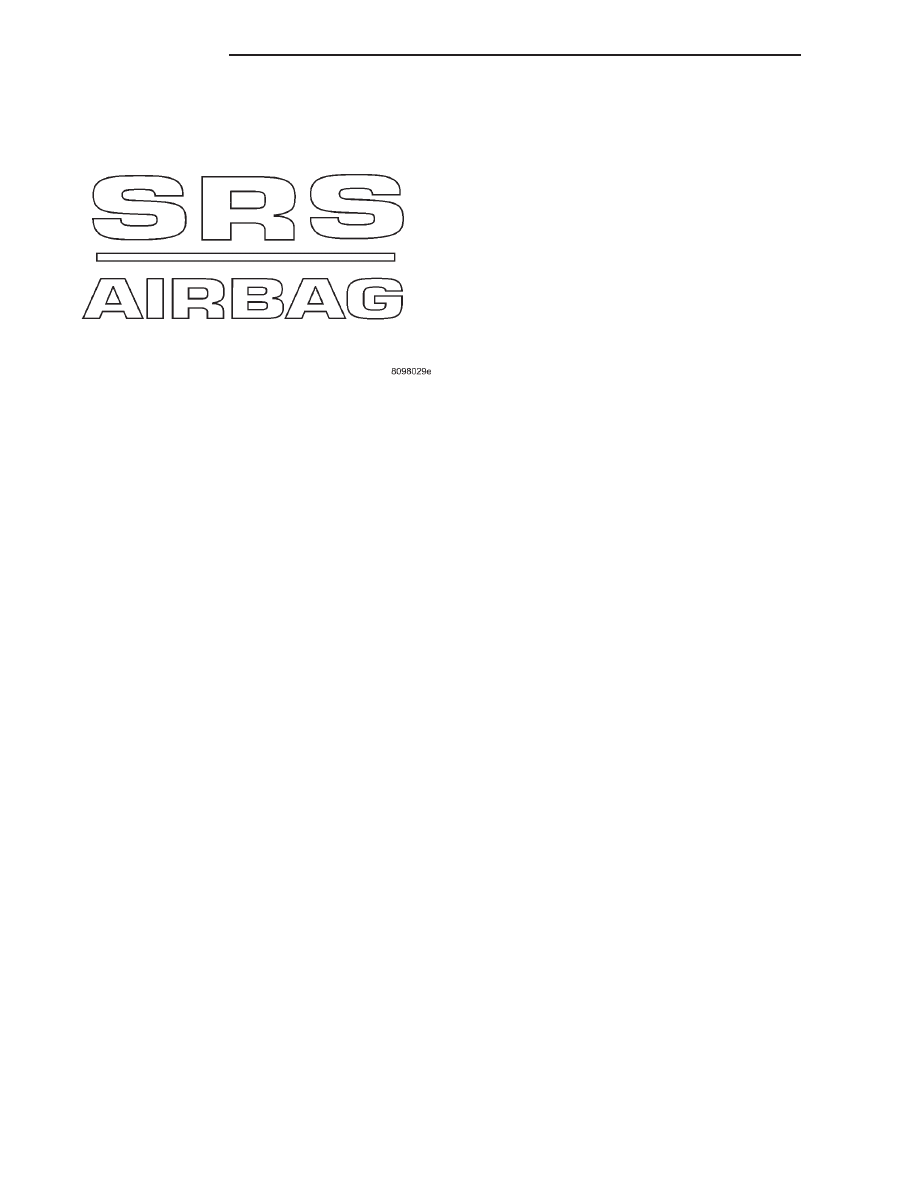Dodge Dakota (R1). Manual - part 346

panel transmission tunnel, below the center of the
instrument panel.
• Airbag Indicator - The airbag indicator is inte-
gral to the ElectroMechanical Instrument Cluster
(EMIC), which is located on the instrument panel in
front of the driver.
• Clockspring - The clockspring is located near
the top of the steering column, directly beneath the
steering wheel.
• Driver Airbag - The driver airbag is located in
the center of the steering wheel, beneath the driver
airbag trim cover.
• Driver Knee Blocker - The driver knee blocker
is a molded plastic structural unit secured to the
back side of and integral to the instrument panel
steering column opening cover.
• Passenger Airbag - The passenger airbag is
located on the instrument panel, beneath the passen-
ger airbag door on the instrument panel above the
glove box on the passenger side of the vehicle.
• Passenger Airbag On/Off Switch - The pas-
senger airbag on/off switch is located in a dedicated
opening in the lower right corner of the instrument
panel, to the right of the cigar lighter or power out-
let. The passenger airbag on/off switch is not used on
quad cab models.
• Passenger Knee Blocker - The passenger knee
blocker is a structural reinforcement that is integral
to and concealed within the glove box door.
• Seat Belt Tensioners - Quad cab models are
equipped with front seat belt tensioners for both out-
board front seating positions. These tensioners are
controlled by the ACM and are integral to the front
seat belt and retractor assembly.
The ACM and the EMIC each contain a central
processing unit and programming that allow them to
communicate with each other using the Programma-
ble Communication Interface (PCI) data bus network.
This method of communication is used for control of
the airbag indicator on all models. (Refer to 8 -
ELECTRICAL/ELECTRONIC
CONTROL
MOD-
ULES/COMMUNICATION - DESCRIPTION).
Hard wired circuitry connects the airbag system
components to each other through the electrical sys-
tem of the vehicle. These hard wired circuits are
integral to several wire harnesses, which are routed
throughout the vehicle and retained by many differ-
ent methods. These circuits may be connected to each
other, to the vehicle electrical system, and to the air-
bag system components through the use of a combi-
nation of soldered splices, splice block connectors,
and many different types of wire harness terminal
connectors and insulators. Refer to the appropriate
wiring information. The wiring information includes
wiring diagrams, proper wire and connector repair
procedures, further details on wire harness routing
and retention, as well as pin-out and location views
for the various wire harness connectors, splices and
grounds.
OPERATION
The airbag system is referred to as a supplemental
restraint system because it was designed and is
intended to enhance the protection for the front seat
occupants of the vehicle only when used in conjunc-
tion with the seat belts. It is referred to as a passive
system
because
the
vehicle
occupants
are
not
required to do anything to make it work. The pri-
mary passenger restraints in this or any other vehi-
cle are the standard equipment factory-installed seat
belts. Seat belts are referred to as an active restraint
because the vehicle occupants are required to physi-
cally fasten and properly adjust these restraints in
order to benefit from them. The vehicle occupants
must be wearing their seat belts in order to obtain
the maximum safety benefit from the factory-in-
stalled airbag system.
The airbag system electrical circuits are continu-
ously monitored and controlled by a microprocessor
and software contained within the Airbag Control
Module (ACM). An airbag indicator in the ElectroMe-
chanical Instrument Cluster (EMIC) lights for about
seven seconds as a bulb test each time the ignition
switch is turned to the On or Start positions. Follow-
ing the bulb test, the airbag indicator is turned on or
off by the ACM to indicate the status of the airbag
system. If the airbag indicator comes on at any time
other than during the bulb test, it indicates that
there is a problem in the airbag system electrical cir-
cuits. Such a problem may cause the airbags not to
deploy
when
required,
or
to
deploy
when
not
required.
The clockspring on the top of the steering column
allows a continuous electrical circuit to be main-
tained between the stationary steering column and
Fig. 1 SRS Logo
8O - 2
RESTRAINTS
AN
RESTRAINTS (Continued)